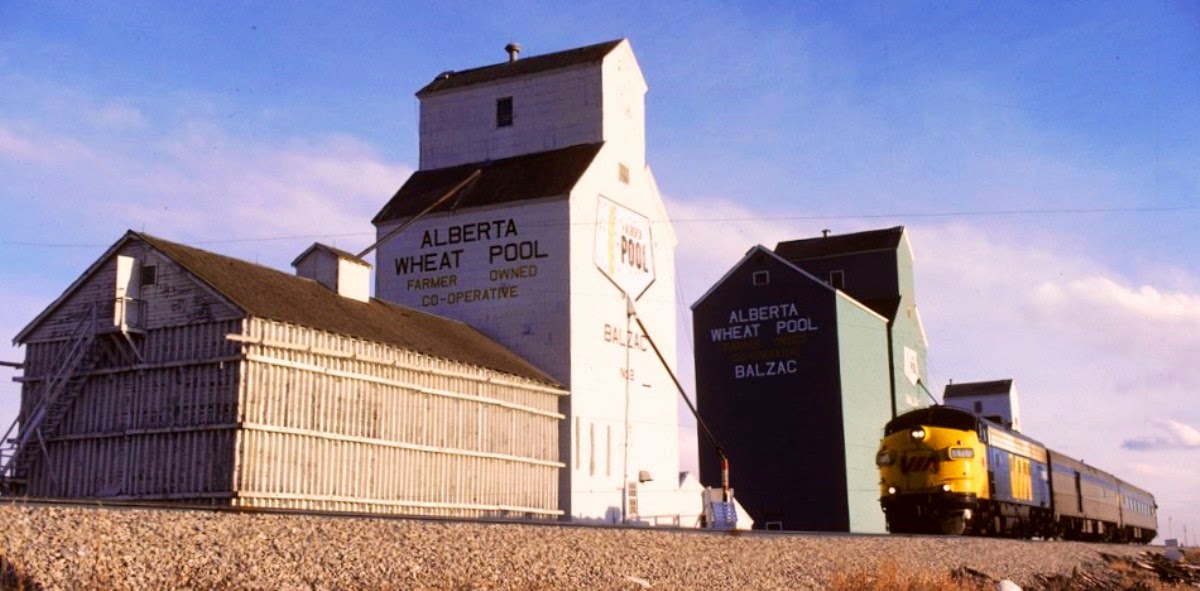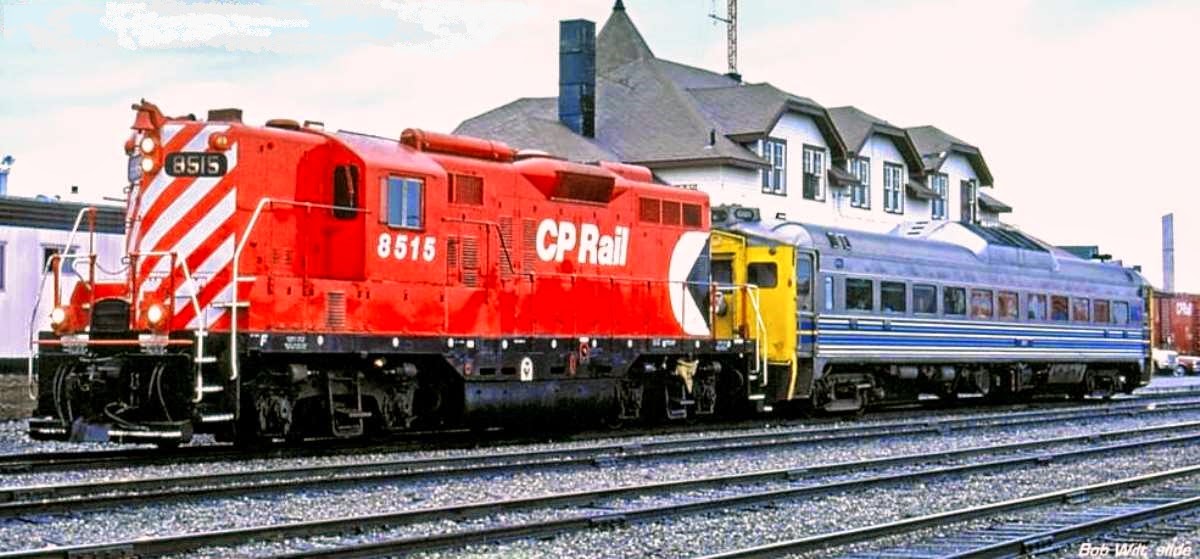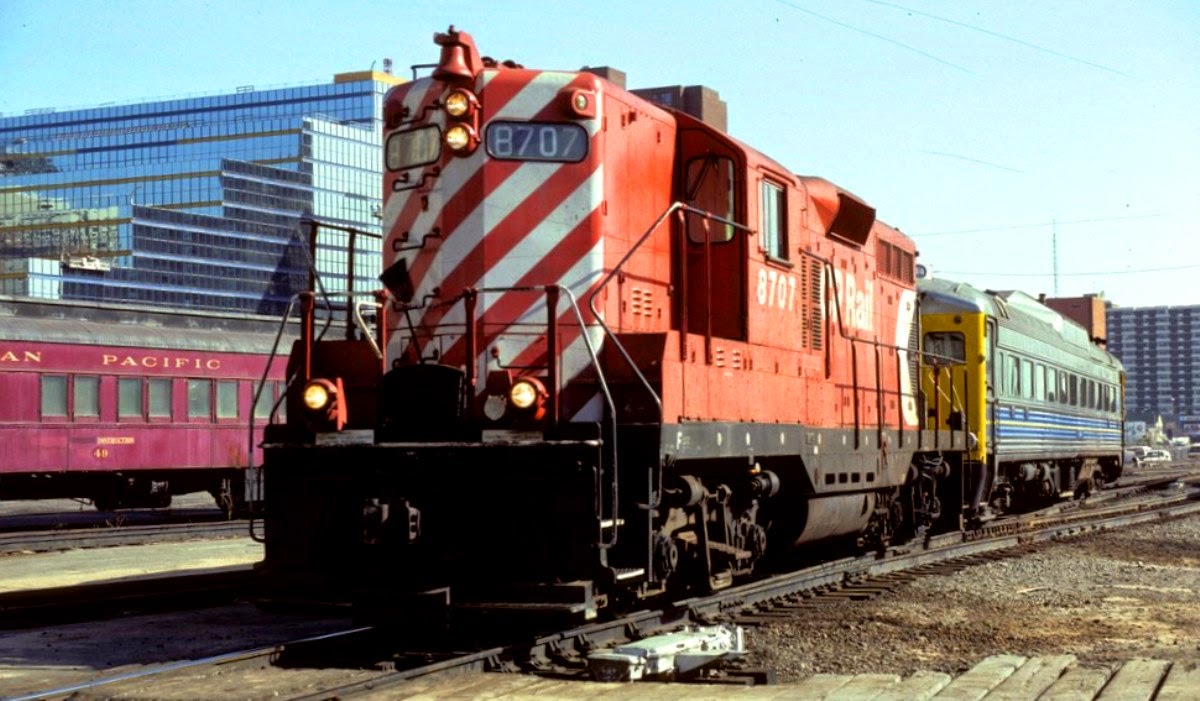CN serves a unique transload facility just north of its Belleville, ON yard. I recently took the opportunity to investigate and photograph the transshipping of roofing granules, produced north of Belleville at Madoc by IKO Industries. The granules are trucked to Belleville, where they're loaded into an incredible variety of covered hoppers.
A Trackmobile moves cars past the conveyor which runs from beneath a truck-unloading ramp. The facility is surrounded by a large loop track on which more cars are stored.
The truck driver is in position (above) and a worker starts loading a car:
The Queen Anne's lace grows up, through, and around the industrial trackage in this peaceful corner of Belleville's industrial park:
Another wide shot of some of the cars that will contain this high-value, dense material. The granules are shipped to IKO plants in Kankakee, IL and Wilmington, DE, and also an IKO plant on the Halton Sub in Brampton. There may also be loads of clay shipped in and trucked to the plant at Madoc, ON.
I've long seen ex-Boston & Maine blue covered hoppers in Belleville, and now I know why. Wearing ATEL Corporation's AEQX reporting marks, these plucky little cars are enjoying a new life in private ownership. Interestingly another car with similar reporting marks is AEQX 14282 - guess what, it's a former Pillsbury Manitoba covered hopper car leased in 1980. See the weld marks? Oh, and now here's AEQX 14280 also with tell-tale 1980-vintage weld marks!
AEQX 3018 (above) and 3004 (below):
February 2015 update: I'd heard that CN was losing this traffic to CP at Havelock. Mohawk Mike Winstanley posted photos of the ex-B&M AEQX cars in CP's Havelock yard in December, 2014:
CN No 321 approaches Belleville yard, crossing over to the north track at speed then the yard lead, over CN's recently-installed triple-tracking. Intended to improve the flow of CN and VIA trains through this part of CN's Kingston Sub, the project also enabled trains to recrew without blocking interlockings and road crossings for hours. This fast-moving freight will soon lift the latest cut of IKO cars westward:
CN No 321 approaches Belleville yard, crossing over to the north track at speed then the yard lead, over CN's recently-installed triple-tracking. Intended to improve the flow of CN and VIA trains through this part of CN's Kingston Sub, the project also enabled trains to recrew without blocking interlockings and road crossings for hours. This fast-moving freight will soon lift the latest cut of IKO cars westward:
Wire products from the industrial hinterland along the South Shore of the St Lawrence are loaded into a variety of ATW, IC and CN gons, flat cars and bulkhead flats:
No 321 is doubling over to lift a second track at the west end of Belleville yard as a heavily-graffiti'd boxcar on the headend awaits the additional cars.
The entire west lift at Belleville by No 321 - cars from Invista and Kimco Steel in Kingston, IKO (arrows) and Berry Plastics in Belleville, and Lafarge Cement in Bath: 

The rest of No 321 basks in the sun, while moribund yard tracks in foreground are overgrown with Queen Anne's lace.
AMG Resources ex-CN 199770 pulled from Kimco Steel in Kingston with a load of scrap. A former rotary-dump gondola used for coal in western Canada, this scrappy survivor has a new lease on life:
AMG Resources ex-CN 199770 pulled from Kimco Steel in Kingston with a load of scrap. A former rotary-dump gondola used for coal in western Canada, this scrappy survivor has a new lease on life:
Just north of Highway 401 on Shannonville Road, a left turn onto Craig Road leads you to this former CN Pointe St Charles caboose, CN 79696 on a nearby farm. I liked the juxtaposition of rocks and trees, windmill and farm equipment:
Strangely, I couldn't find this Craig Road find in the Bytown Railway Society Canadian Trackside Guide. Thanks to a co-worker who was trying to find a way around a frustrating 401 accident detour. Thanks, GT! Ironically, there's a former ex-GT (exx-DT&I 153) caboose at a golf driving range in Belleville!
Running extra...
Freshly-repainted and remounted on its plinth, Harvard AJ693 in front ot RCAFA 416 Wing at Kingston's Norman Rogers Airport, formerly 31 Service Flying Training School during World War 2:
Canadian funny man Rick Mercer was also at Kingston airport, filming a segment on the Kingston Flying Club flour-bombing challenge. Indeed challenging with 28 knot winds gusting 37. The Cessnas were flying at 45-degree angles during their bombing runs!















































